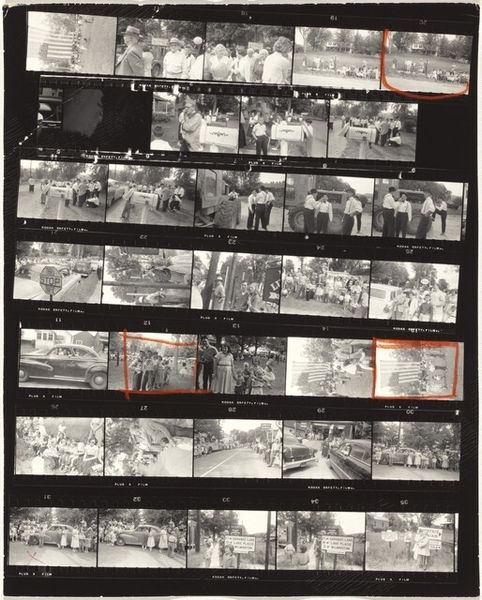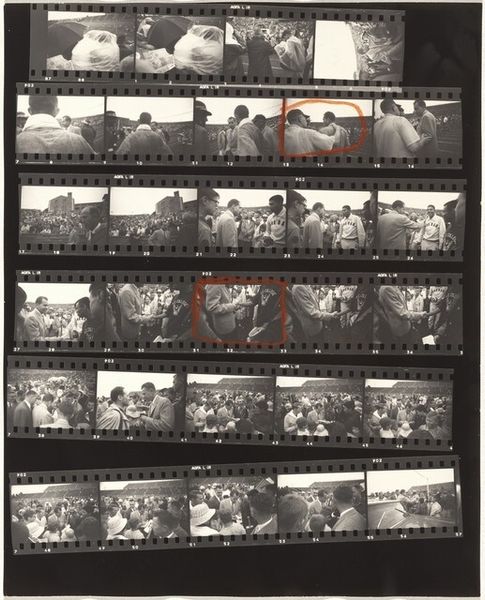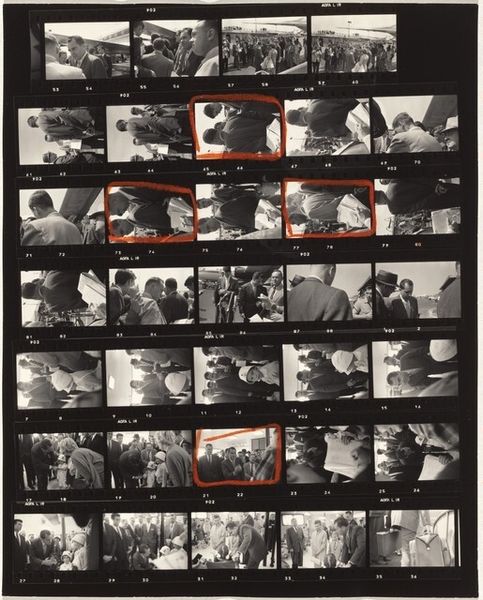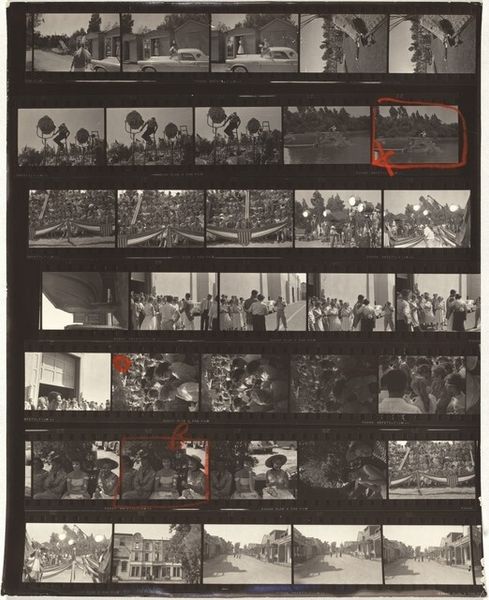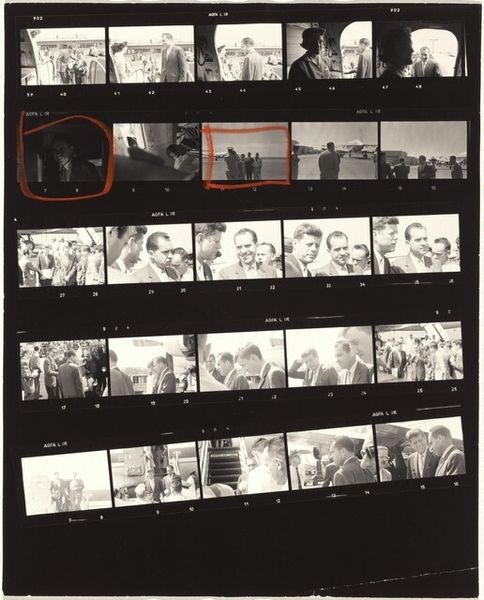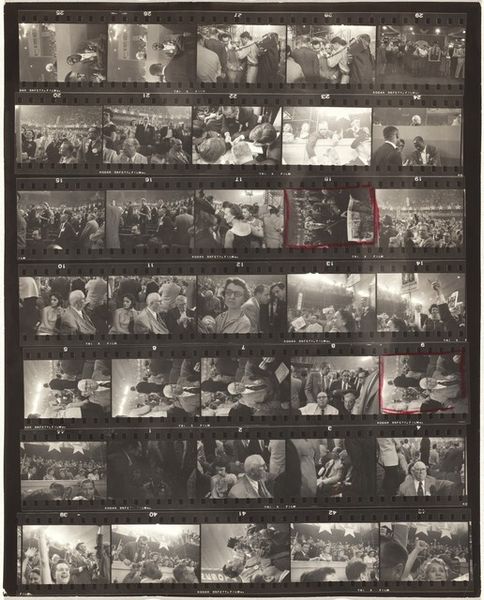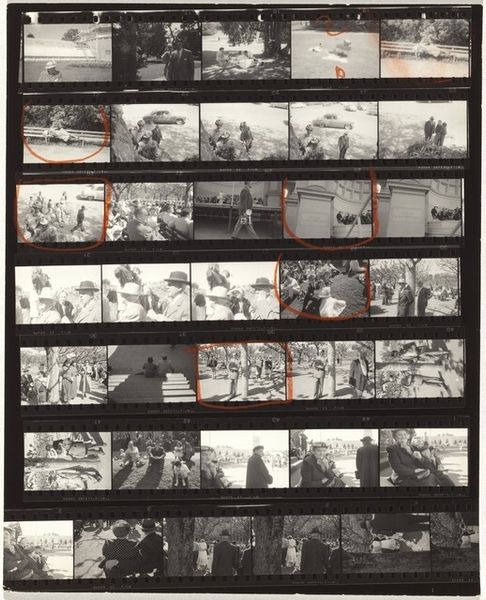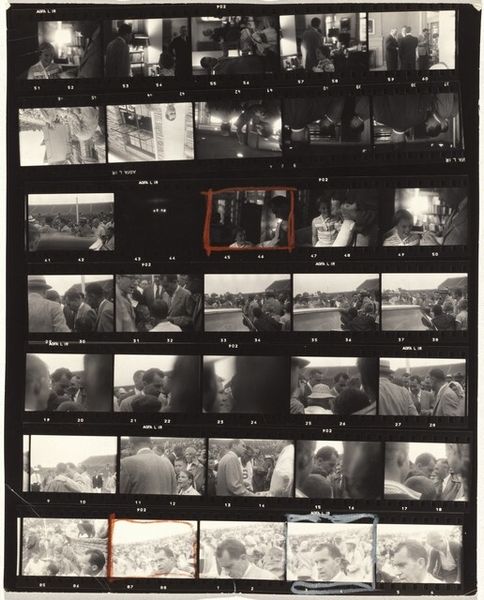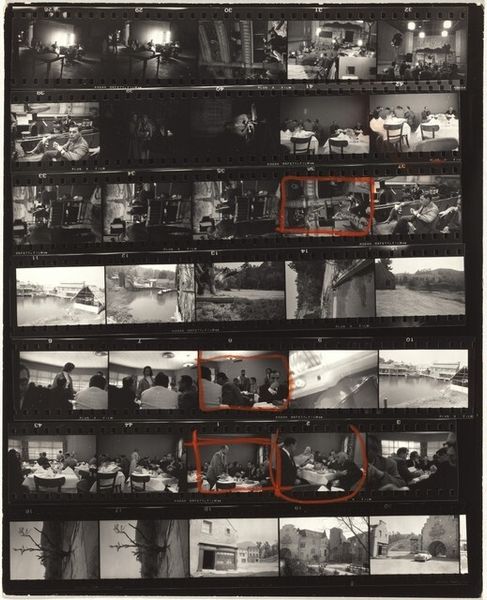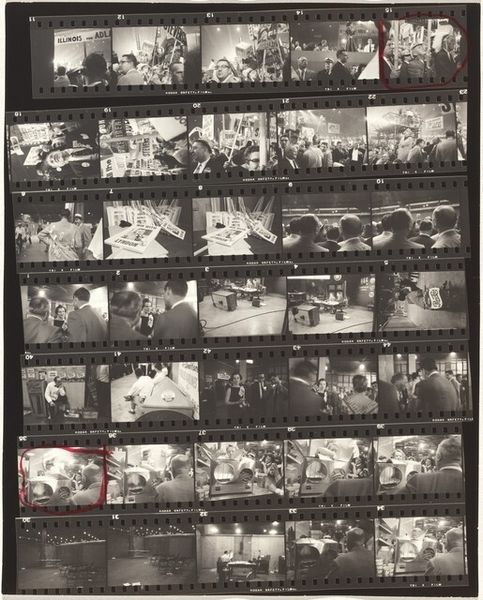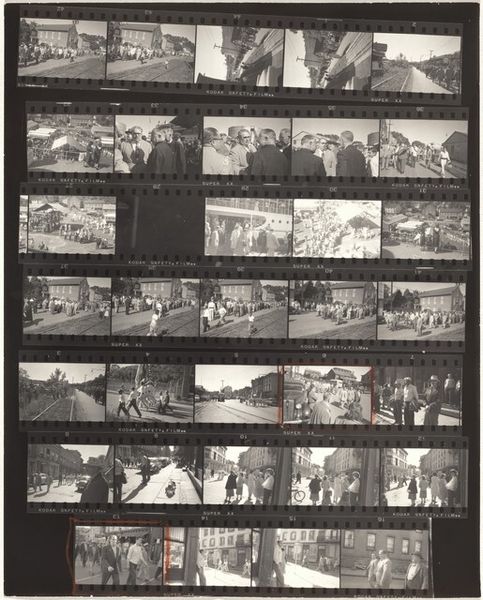
photography, gelatin-silver-print
#
portrait
#
conceptual-art
#
postminimalism
#
photography
#
photojournalism
#
gelatin-silver-print
#
pop-art
#
realism
Dimensions: overall: 25.2 x 20.2 cm (9 15/16 x 7 15/16 in.)
Copyright: National Gallery of Art: CC0 1.0
Editor: This is Robert Frank's "Nixon Campaign 20" from 1960, a gelatin-silver print capturing what appears to be behind-the-scenes moments during Nixon’s presidential campaign. I'm immediately struck by its documentary feel. How would you interpret this sequence of images? Curator: Ah, yes, Frank’s work here really invites us into a private world, doesn’t it? The raw, unpolished aesthetic hints at a narrative beyond what the campaign might want us to see. It’s almost like glimpsing at Nixon through a slightly cracked door – not posed, not perfected, but caught in the flow. Tell me, does that cracked door reveal anything about the *person*, do you think? Editor: Well, the grid format makes it seem like we're examining evidence, rather than admiring a politician. It feels intentionally disjointed. It makes me wonder what Frank was trying to convey by emphasizing certain moments, even marking some with red outlines, and obscuring others. Curator: Precisely! The marks – the red outlines and scratches – aren't accidental. Frank isn't just showing us, he's telling us something about the performance of politics, its constructed nature. And the deliberate obscuring—it’s a potent act. It provokes us to question what’s hidden, censored, or strategically left out of the frame, not just in a photograph, but in the wider political landscape. The gelatin-silver print, often associated with capturing ‘reality,’ is ironically deployed to deconstruct it. Do you see it mirroring any societal tensions? Editor: I do. This really challenges the idealized image of political campaigns. I thought photography was supposed to reflect the truth. Curator: It seems the “truth” is layered and slippery, doesn’t it? This piece reminds us that art can be less about reflecting the world as it is, and more about revealing the cracks in its carefully constructed facade. Editor: It's a fascinating way to dismantle an image. Thank you for the insightful context! Curator: And thank you for your sharp observations! Art, like politics, is a dialogue, wouldn't you agree?
Comments
No comments
Be the first to comment and join the conversation on the ultimate creative platform.
